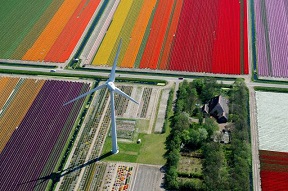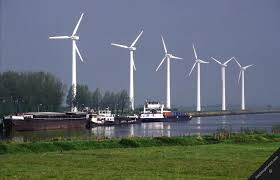They had come to Amsterdam by the dozens, to the Wind Energy Debate, to let themselves be heard. Opponents of wind energy. Their numbers and particularly their zest testified to it that the debate on wind energy has not calmed down by far. With such motivated opponents, the realisation of the goals of last year’s national Energy Agreement is by no means a done deal yet.

Arguments and interests on wind energy
The debate on wind energy takes place on two levels. The first is that of the arguments, on which scientists discussed in the meeting. The second level is that of the interests, that took hold of the discussion when the audience became involved. On the first level a number of arguments has been dealt with (what time does it take for a wind turbine to produce the energy needed for its construction in the first place?). Discussion now is mainly on ‘system effects’ in the grid: how much of the turbine’s energy production remains after their effect on other production units, which become less efficient, has been taken into account? The common citizen can hardly grasp the discussion on that issue. Although this argument might stick in people’s minds: we cannot rely on system studies and model calculations – we need real data. The common citizen cannot interpret those data, but if they are kept secret (and that seemed not to be denied), they could better be released. Anything secret just stirs up conspiracy theories.
On the second level, that of interests, many issues are just as foggy. Loss of property value of houses near a wind turbine is an important argument. No doubt, that effect has arisen – but as a general argument, it is as vague as the ‘systems effects’ of wind turbines. Get out into the open with it, let it be investigated! And if the experts disagree, lock them up together until they come up with conclusions. But in the background, of course, there is the nuisance people feel, partly not captured by terms like ‘intermittent shadow effect’ or ‘visual disturbance’, because the issue is real annoyance.

Annoyance by anonymous powers
The most intangible of these annoyances is the feeling that one does not have a say anymore in one’s own environment. An anonymous investor, say an electricity company, gets a permit for a wind turbine. The company’s shareholders live far away but the device is there, right in front of you. Maddening. Therefore, the wind sector’s present-day mantra is that people around should become involved. If the machine earns money for you, it feels completely different. Even if it earns money for the farmer next door, we might be a little less severe. But not for anonymous investors, who are increasingly looked upon as shameless money makers anyway.
But precisely this involvement of people around is threatened by new developments. Communities and provinces have started regulating the ‘proliferation’ of wind turbines. No more single wind turbines on individual farmers’ lands. Align turbines in parks, much tidier. Plan public space. But precisely this approach removes the construction of wind turbines to a level to which the individual citizen has less access, whereas the investor has more. For the investment required will be at least ten times as large, out of the reach of the farmer looking for some diversification. Citizens and small investors can now participate only through the creation of an intermediate level, a cooperative that organises involvement and money, and deals with red tape. Like Windunie or the Windcentrale. And even so, they will have to be cautious and organise local support, in order not to fan the opposition.
Coal at dump prices as the competitor
Personally, I like the sight of modern wind turbines, but I know quite a number of people who think they are an insult to the landscape. For me, they do not detonate at all in open land, particularly not in land that has a certain ‘technical’ character in itself, like the province of Flevoland. But I do wonder if the latest generation of turbines does not become too big for any landscape. I understand that turbines must grow taller and larger in order to be competitive. But as coal prices have come down to an all-time low (in the US, shale gas drives coal out of electricity generation, and that coal is sold here at dump prices), competition becomes impossible for decent wind turbine manufacturers. We should not construct ever more monstrous machines but finally levy the CO2 tax that should have been put in place long ago, when the European system of emissions trading flopped.
In the national Energy Agreement (2013), wind energy plays a crucial role in reducing CO2 emissions. But the agreement also placed the wind sector between two fires. On the one hand, it has taken on it the task of constructing sufficient power up to 2023: 6.000 MW on land, and 4.400 MW at sea. At the same time, a limit has been set for the financial support that the sector will receive. With the latest developments in mind, it is by no means clear that the sector will be able to fulfil this double obligation.
